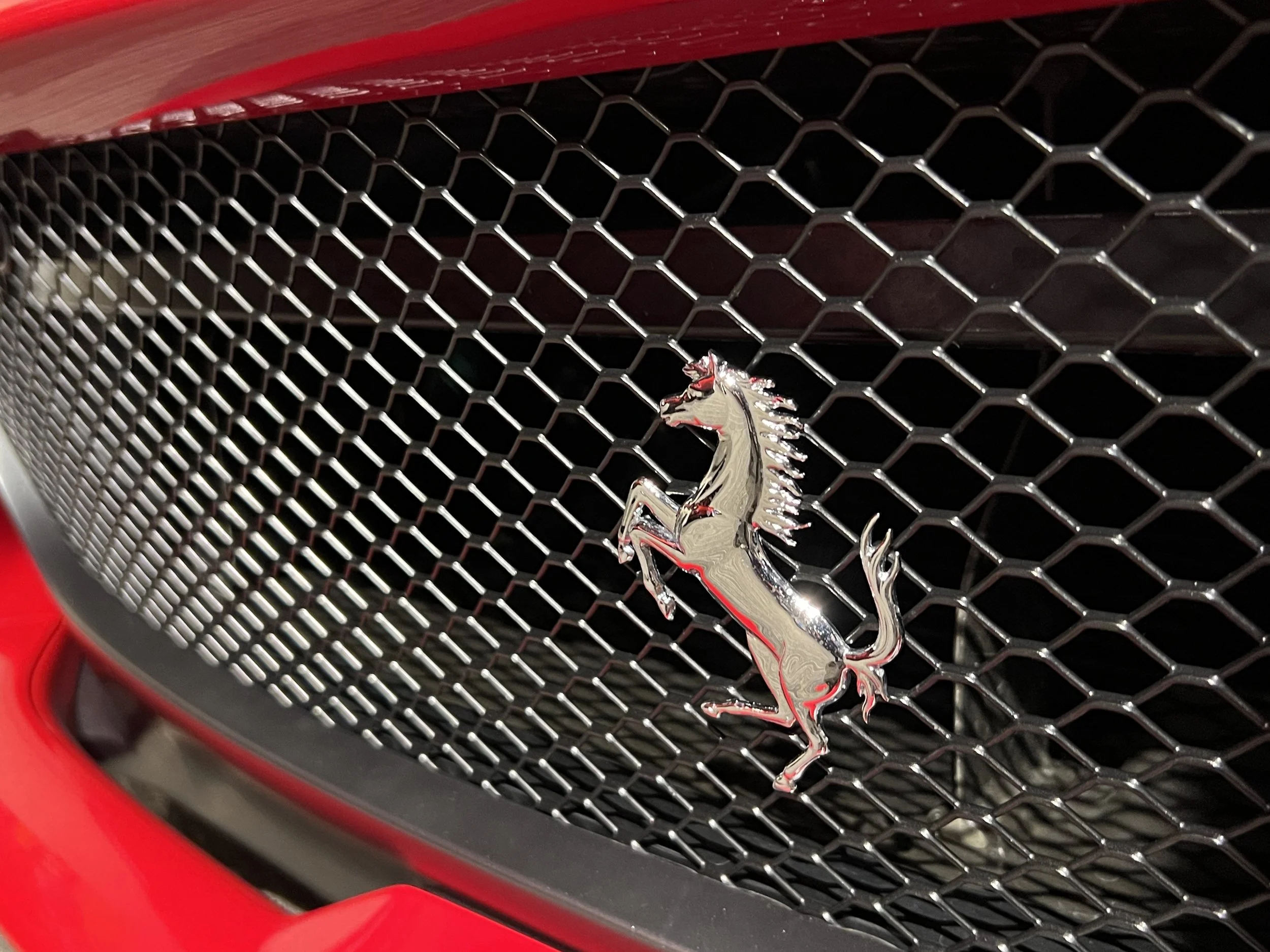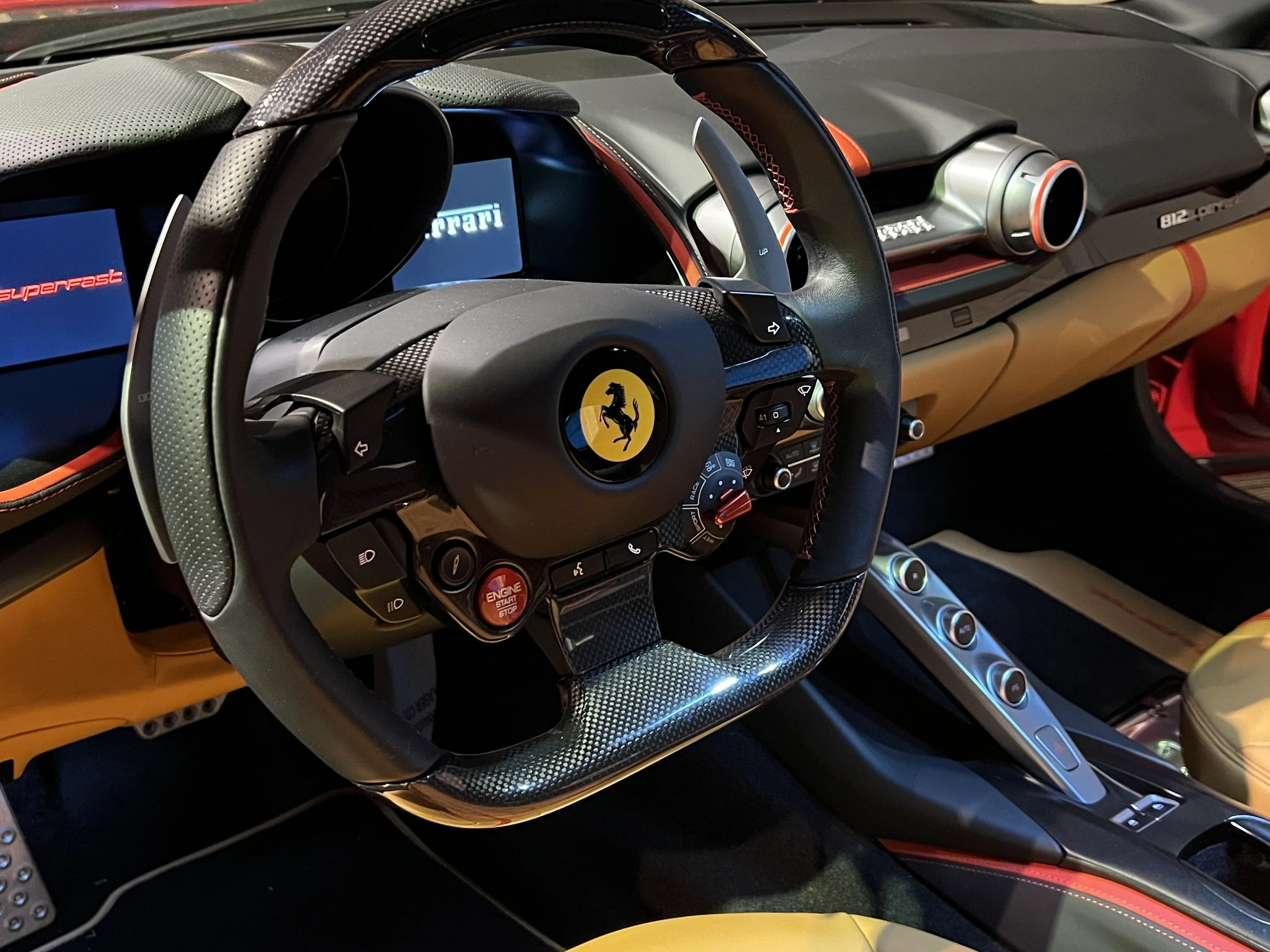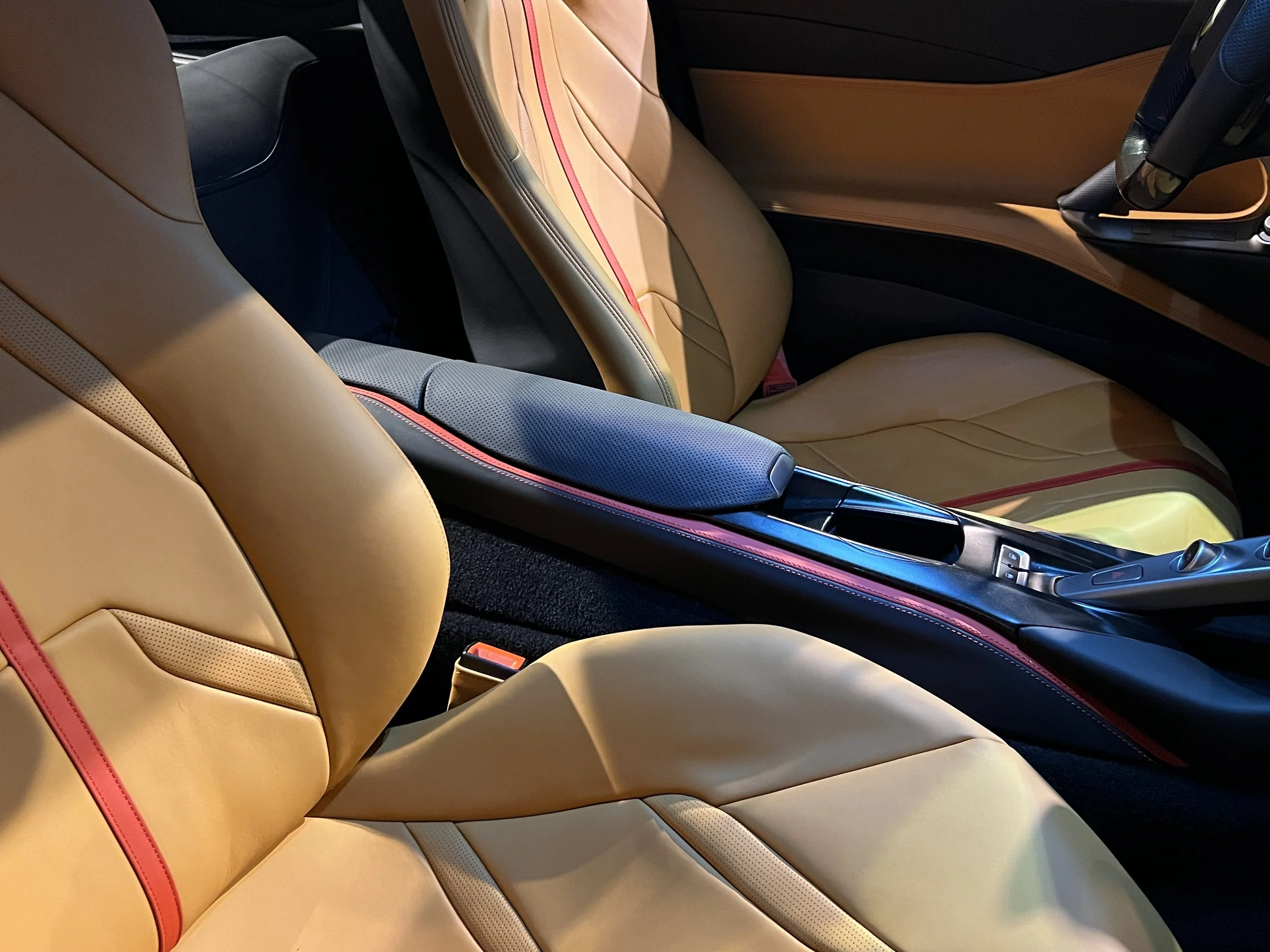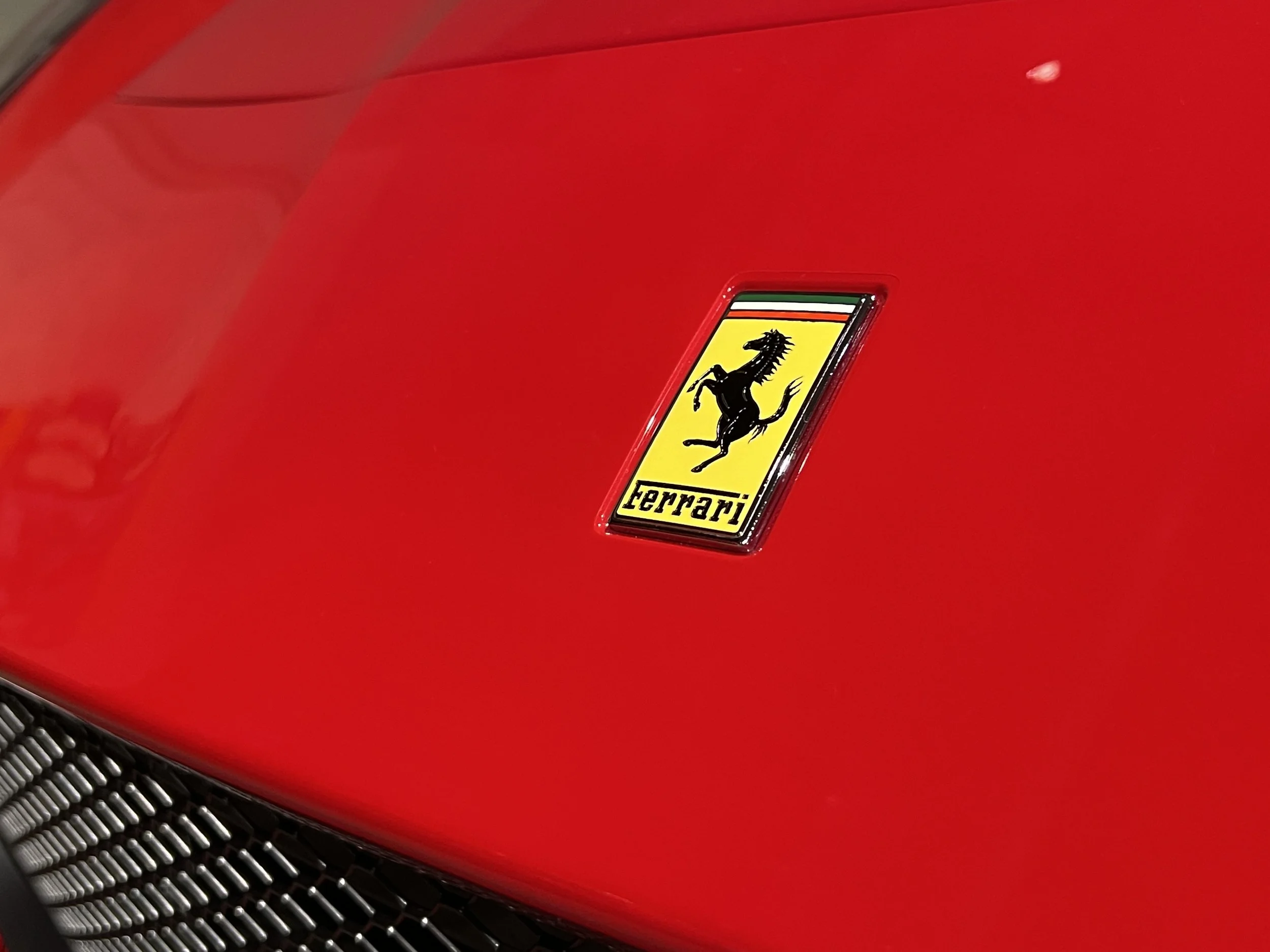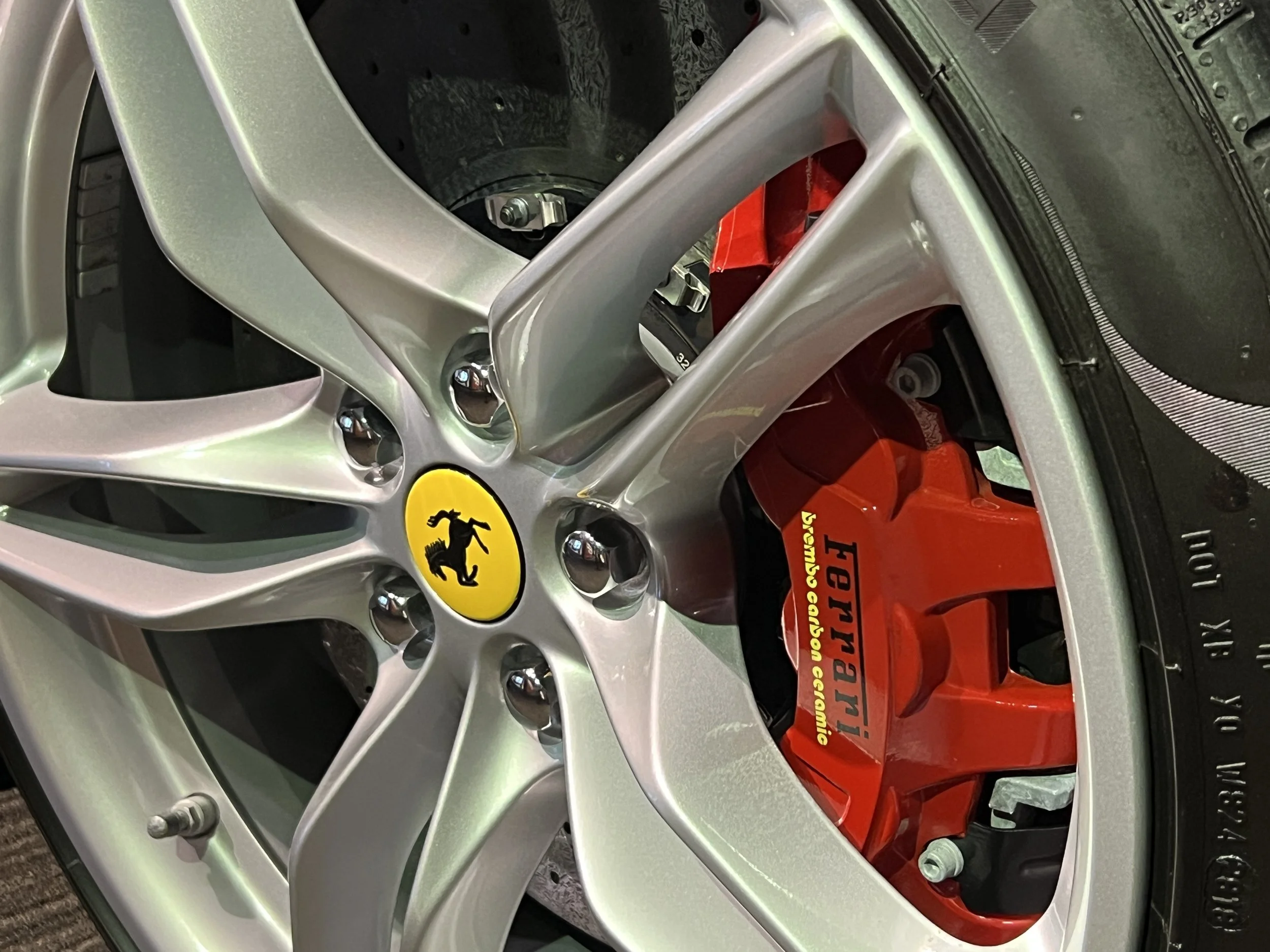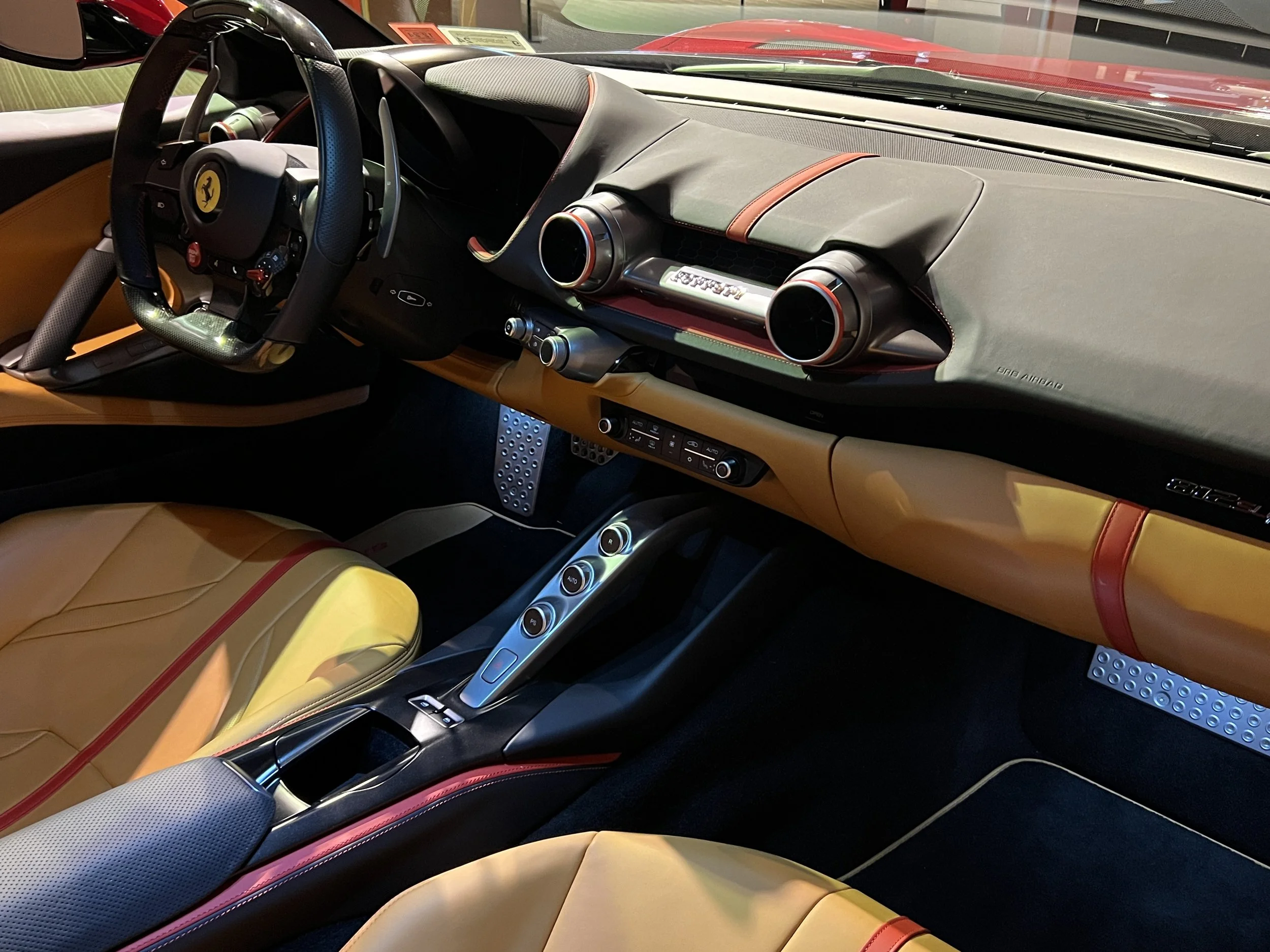2021 Ferrari 812 Superfast
On loan courtesy of J. Eric King - Latham, NY
While only a few years old, the 812 is the product of decades of Ferrari progress and development. It is the present-day embodiment of the pioneering 365 GTB/4 Daytona also on display. The 812 brings together benchmark track-derived engineering and the level of luxury that remains a hallmark of Ferrari.
The 812 Superfast made its debut in Geneva in 2017 as a front-mid engine rear wheel drive Grand Touring machine. It is the updated iteration of the design philosophy found in the Ferrari 250 GT Berlinetta Lusso, which was first shown in 1962. Like the Lusso, the 812 was designed to take 2 people a long distance, at high speeds and in luxury comfort.
The 812 stands as an example of the advances Ferrari design innovation. By moving the engine over the front axle, it is then possible to achieve the benefits and balance found in the weight distribution of a mid-engine machine; with 47% front and 53% rear. The 6.5 liter 65 degree V-12 naturally aspirated engine produces 789 hp at 8,500 rpm. At introduction it was the most potent engine of its type ever made. All that power reaches the wheels via a dual-clutch automatic gearbox made to Ferrari specifications by Getrag. Braking is made seamless by carbon-ceramic Brembo Extreme Design disc brakes; 15.7 inches in the front and 14.2 at the back.
The shape of the coachwork came from the Ferrari Styling Centre under the direction of award winning designer Flavio Manzoni (b. 1965). The body is designed to mix passive and active aerodynamic features to allow the machine to slip through the air while generating road hugging down force. Another Ferrari first, Electronic Power Steering is used along with rear-wheel steering to keep the machine and all its horsepower pointed in the right direction.
In early 1972, well known used car dealer Kirk F. White acquired a well-used Alfa Romeo 1500 Supercharged racer for resale and was at a loss for how to get rid of it. After having it sit around his showroom with nobody taking interest, he hoped that Luigi Chinetti might have enough interest to take it off of his hands thanks to his prior race history in Alfas. Upon bringing him photos, Chinetti took an interest in the Alfa, which Kirk paid $2000 for a few months earlier. White was hoping to get $5,000 for the car but was ready to take less just to get the car out of his hair. When Chinetti instead offered him a brand new Daytona (worth about $20,000 at the time), White jumped at the opportunity. This is the same Daytona you see here today. In the spring of 1971, White was co-sponsoring Penske Racing’s Ferrari 512S at LeMans. Chinetti planned to have the car delivered to White at the race by the Ferrari factory. The only issue was, White and the Penske team were the Ferrari factory team’s biggest competition at the time so if they knew that the car was going to White, it may not have happened on schedule. This is why Chinetti had the car first written down as being sold to a “Dr. Jones” even though the first owner was in fact White. The car arrived at LeMans in sand beige metallic with a black interior. After the race where the White/Penske 512 suffered a crushing loss, the car was sent home. Upon arrival in Pennsylvania, the first stop for S/N: 14271 was the paint shop where it was painted Sunoco blue with yellow pinstriping by Larry Schoppett. This was done to match with Penske’s biggest sponsor at the time- Sunoco. During this trip to the body shop, the car also lost its radio antenna and the mandatory smog equipment. The car was then pushed into daily driving duties for Kirk F. White Motorcars being used to drive all over the eastern seaboard looking at cars for his dealership.
Not long before acquiring the Daytona, White had sold a car to known auto writer Brock Yates and they became fast friends. One night, White got a call from Yates about his idea for a road rally driving from New York to Los Angeles in the shortest time possible. During this call, Yates mentioned his desire to use White’s Daytona for the run. The Cannonball Baker Sea-to-Shining-Sea Memorial Trophy Dash, or “Cannonball Run” as it was to be known.
November 15, 1971, 8 teams gathered at the Red Ball Garage in Manhattan. As the midnight starting time approached, Yates and Gurney stocked up on provisions: Swiss cheese, Hershey bars, Gatorade and vitamin C.
Gurney drove the first 18 hours through horrible weather at one point verifying the Daytona’s top speed at an indicated 172mph. They arrived at the Portofino Inn in Redondo Beach, California, on November 17, 1971, just 35 hours and 53 minutes after leaving the Red Ball Garage 2,876 miles ago. With stops, their average speed was 80.8 mph. This set the defined record for cross country races that would not be beat until the 1976 running with David Heinz and David Yarburough.
During the 1972 race season, White’s dealership was partially responsible for campaigning a Daytona Competition car in endurance racing. As the season progressed, parts on the racecar required changing frequently and White began to use his daily driver as a parts car. This included swapping the motor over to the racecar for the 1972 Sebring race. After this swap was made, the competition car’s engine was then put into 14271 and that is the engine remains there today. Prior to the motor swap, the car was sent to famed hot rod shop Holman and Moody for tuning- this consisted of altered valve clearances and improved the cooling system so that the engine would last longer when racing. The engine currently in the car has these modifications. After incurring many expenses during the 1972 race season, White had to reduce some of his financial burden and sold the Cannonball Daytona.
While not entirely sure, White thinks that the car then went to Dr. Terry Clark of Clemson, South Carolina. This would make sense because Joe Gulrich purchased the car out of South Carolina in 1979. After using it as a daily driver in Florida for a number of years, Gulrich took the Daytona on yet another cross-country road trip. This time, it wasn’t a race for time but instead a big move to Southern California. Packed to the gills with everything he owned, Gulrich achieved speeds of up to 160mph on his way out. After a couple of years of hard use, the car dropped a valve while driving to work one day and Gulrich decided it was time to get the car back in top condition. A simple engine rebuild turned into a full blown restoration that took from 1981 until 1984 and consisted of body work, paint, interior replacement and swapping out many worn out suspension and engine components with fresh examples. The car remained the SUNOCO blue it was painted in 1971 and Gulrich had the pinstripes put back on. After the restoration was completed, Gulrich drove the car to Monterey for the Ferrari Club National Meet where the car placed fourth. It then went on to win a number of other concours events along the west coast but ultimately; the car was too nice to drive. Gulrich had enjoyed the car for a number of years but after a costly restoration took the car from a daily driver to a full-blown show car, the desire to get his money out of the project arose. When the car finally came up for sale in 1987, it returned to its original owner, Kirk F. White.
White owned the car for a number of years and enjoyed having the car back in his life. While under his care, the car was reunited with both Dan Gurney and Brock Yates and in September of 1988, Gurney had a chance to take the Daytona around Watkins Glen during the Cannonball/One Lap of America Reunion.
During the late 1990s, when the Ferrari bubble had popped, the car came up for sale numerous times and struggled to sell. Finally in March of 2000, BRM purchased the vehicle at an auction held in conjunction with the Amelia Island Concours. The car has since been shown at Pebble Beach and Amelia Island and is in perfect running condition.

